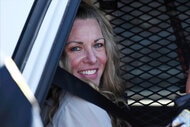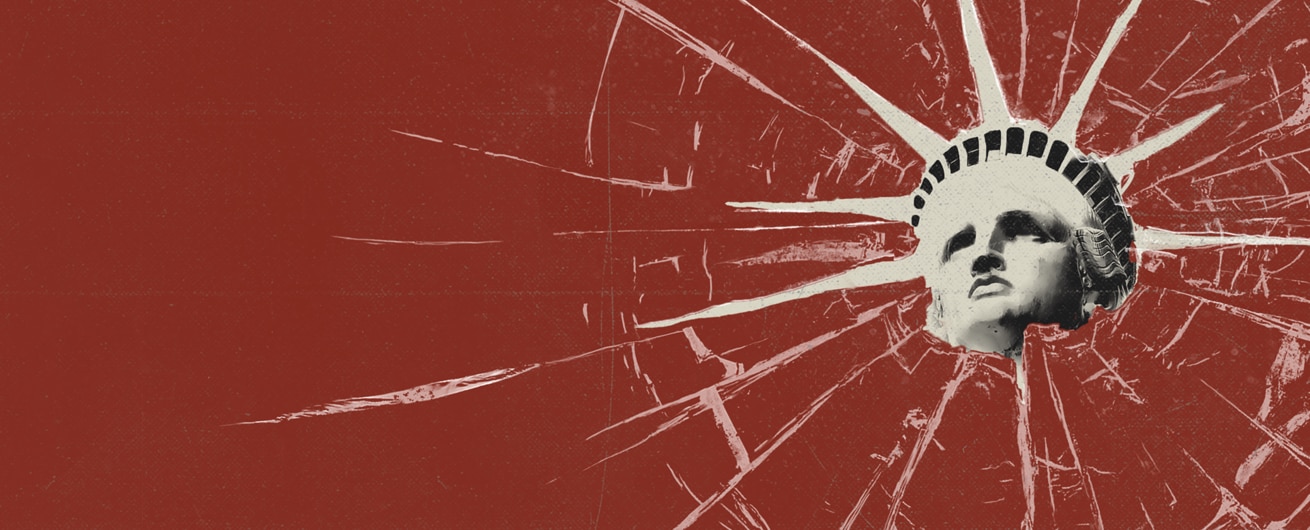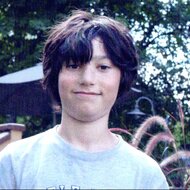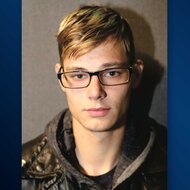Journalist Fatally Shot in Head in New York City Restaurant in "Assassination"
Crusading journalist Manuel de Dios Unanue, 49, was having a drink at a restaurant in Elmhurst, Queens when he was shot. The gunman quickly fled the scene.
Crusading journalist Manuel de Dios Unanue, 49, was having a drink at Meson Asturias restaurant in Elmhurst, Queens when he was fatally shot on March 11, 1992.
The gunman, identified by the bartender as a man in his twenties, quickly fled the scene, according to the "Dangerous Work" episode of New York Homicide, which airs new episodes on Saturdays at 9/8c p.m. on Oxygen.
“Two shots in the back of the head,” Oscar Hernandez, who was a detective with the New York City Police Department’s 110th Precinct at the time, said on the show.
"This was an assassination,” Hernandez added.
Who was Manuel de Dios Unanue?
Born in Cuba, de Dios had fled the Castro regime. “He did a master’s degree in Puerto Rico in criminology, and then from there, he came to New York City in the early 1970s,” said journalist Juan Manuel Benitez.
The former editor in chief of El Diario-La Prensa, a prominent Spanish language daily newspaper, de Dios saw himself and his publication as immigrants’ access to New York City, said journalist Rossana Rosado, a friend and colleague.
“He was accessible. People loved him,” said Rosado, adding that he believed in following one’s “moral compass.”
Vicki Sanchez, with whom de Dios had a 2-year-old daughter with at the time, told police that his work as a journalist had put him in danger.
“He was getting death threats because of his journalism,” Juan Manuel Benitez said. “He wasn’t afraid of publishing names or facing truly powerful people.”
Murdered journalist's brave work comes to light
Investigators learned that de Dios had testified in hearings in Puerto Rico about the high-profile murders of two young men found dead in an area called the Cerro Maravilla.
“Right before he was killed, he exposed all the information that clearly it was a political assassination,” said journalist Esteben Creste, who was a colleague of de Dios.
Investigators followed this lead as a possible motive for his murder. They also noted that Omega 7, a violent anti-Castro paramilitary group active in the U.S., was another one of his enemies.
Along with the New York City mayor's office, El Dario-La Prensa, Newsday, The Daily News, The New York Post, and The New York Times put up reward money for tips leading to the arrest of de Dios’ killer.
Task force formed to find Manuel de Dios Unanue's killer
A unique task force was created to find de Dios’ killer. “Somebody had given us the name, the Mambo Kings,” said Hernandez. “Every one of us spoke, read and wrote Spanish.”
The Mambo Kings’ dogged detective work determined that the Omega 7 and the Cerro Maravilla were not tied to de Dios’ assassination.
Investigators turned their attention to the illegal drug trade, which de Dios was covering in depth. “This was his focus,” Juan Manuel Benitez said.
“In that time, Queens, specifically Jackson Heights and Elmhurst, was the center of Colombian drug trafficking in New York City,” said Creste.
NYPD investigators reached out and began working with the Drug Enforcement Administration and collaborated with a group called Redrum — murder spelled backwards.
“The Redrum team was made up of DEA agents, police and State Troopers,” said Bill Perlitz, now retired as a sergeant with the DEA, Redrum.
Detectives focus on de Dios' drug-trade reporting
One of the group’s prime focuses was drug-related slayings. “During the late '80s, early '90s, there were a lot of homicides in Queens,” said Billy Dolinsky, now retired as a special agent with the DEA, Redrum.
Investigators knew that de Dios spoke regularly on the radio. Detectives combed through the recordings of de Dios’ radio show for leads to his killer. At the same time, investigators enlisted a network of confidential informants.
In November of 1992, an informant told investigators he overheard a man he knew as Leo talking about de Dios’ murder. Leo’s real name was Juan Carlos Velasco.
A Redrum agent went undercover as a drug trafficker looking to score crack to snare Velasco. “One of our tactics was to buy drugs from the person, arrest them and then ask them if they want to cooperate,” said Perlitz.
“To catch a monster, sometimes you have to become a monster yourself,” said Hernandez. “If you’re in the sewer, you gotta look like a rat.”
The plan led to the arrest of Velasco and his wife, Elizabeth Castano. A search of their residence turned up a paper with de Dios’ car license plate information on it.
RELATED: Bronx Man Masterminds Father’s "Gruesome" Execution, Driven By "Greed and Depravity"
Alleged mastermind behind de Dios hit emerges
After a lengthy interrogation, Velasco told police that John Harold Mena contracted de Dios’ murder. To learn the motive, detectives interrogated Mena, who was in lockup for a drug charge at the Metropolitan Correctional Center.
“He was looking at some heavy time, so he started cooperating,” said Dolinsky.
Mena said the order to kill de Dios came from Colombian drug lord José “Chepe” Santacruz Londono. Londono was then head of the Cali Cartel, a drug syndicate responsible for about 80% of cocaine brought into the U.S. at the time, according to New York Homicide.
The revelation shocked investigators. “It was the first murder ordered by a leader of a drug cartel on U.S. soil,” Juan Manuel Benitez said.
"In order to catch Manuel de Dios' killers, the task force will have to take on the Cali Cartel," said Robert K. Boyce, a former New York City Police Department chief of detectives.
Investigators learned that when the head of the Cali Cartel found out that de Dios was writing a book in which he named those involved with the Colombian syndicate, he ordered the hit.
At this point, the Offices of the United States Attorneys got involved. As federal agents pursued Londono, Redrum agents searched Queens for de Dios’ killers.
The investigation resulted in the arrest of Jose James Benitez, who was involved in the homicide but didn’t pull the trigger, said Hernandez.
Jose James Benitez led cops to Elkin Farley Salazar, who told police that the actual triggerman was a Colombian assassin nicknamed Mono. His real identity was Wilson Alejandro Mejia Velez.
Police hatched a plan to catch Mejia Velez with the help of Salazar and Jose James Benitez, who communicated with Mejia Velez via a beeper. That led a team of investigators to Miami, where they staked out a phone booth that Mejia Velez was known to use.
Conspirators face justice for Manuel de Dios Unanue murder
On May 8, 1993, Mejia Velez was arrested in Miami and extradited to New York.
Velasco, Jose James Benitez and Salazar all pleaded guilty for their roles in the murder conspiracy. Velasco was sentenced to 15 years, while Jose James Benitez and Salazar received 18 years.
“With regards to their cooperation through the Drug Enforcement Administration and the US Attorney's Office, they will be all put in witness protection when released,” said Hernandez.
RELATED: Murdered Man's Body Found Buried Amid New York City Beach Debris After Storm
In February of 1994, Mejia Velez was tried for de Dios’ murder. He was found guilty and sentenced to life. It was revealed that he was paid $1,500 for the murder, said Creste.
Londono never faced justice for allegedly masterminding de Dios’ murder. “He was shot and killed by cops in 1996 after he escaped from a Colombian prison,” the New York Post reported.
“You live by the sword, you die by the sword,” said Hernandez.
De Dios’ death highlighted the vulnerability of journalists confronting powerful criminal organizations. Manuel de Dios Unanue Triangle is a park in Elmhurst, Queens named in his honor by New York City.
To learn more about the case, watch the “Dangerous Work” episode of New York Homicide. The series airs new episodes on Saturdays at 9/8c p.m. on Oxygen.

































